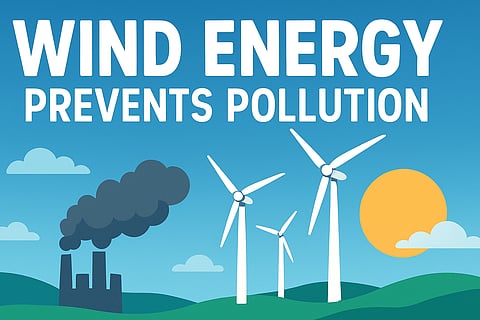Wind Energy: Harnessing Nature to Combat Pollution
As the world battles the dual crises of climate change and pollution, wind energy has emerged as one of humanity’s most powerful allies in the transition to clean, renewable power.
Derived from the natural movement of air in the Earth’s atmosphere, wind energy generates electricity without burning fossil fuels, making it one of the most sustainable and environmentally friendly energy sources available today.
How Wind Energy Works
Wind turbines capture the kinetic energy of moving air and convert it into mechanical power. This mechanical energy then drives a generator to produce electricity. Modern turbines can power thousands of homes, and large wind farms—onshore or offshore—feed electricity directly into national grids. Unlike coal or gas plants, they operate without combustion, meaning no carbon dioxide (CO₂), sulfur dioxide (SO₂), or nitrogen oxides (NOx) are released into the atmosphere.
Preventing Air Pollution
Traditional power generation from fossil fuels is the single largest source of air pollution globally. It contributes heavily to smog, acid rain, and respiratory diseases. Wind energy, by contrast, emits no air pollutants during operation. The U.S. Department of Energy estimates that every megawatt-hour (MWh) of wind energy generated avoids roughly 1,200 pounds of CO₂ emissions that would have come from conventional sources.
Furthermore, reducing dependency on coal-fired power plants leads to a decline in particulate matter, which significantly improves air quality and public health. Countries investing in wind power have seen measurable reductions in air pollution-related deaths and hospitalizations.
Protecting Water and Soil
Unlike thermal power plants, wind turbines require no water for cooling, drastically cutting down on freshwater use. This is crucial in arid regions already facing water scarcity. Wind energy also prevents soil contamination, since there is no risk of fuel spills, mining waste, or ash disposal—all of which are common byproducts of fossil fuel extraction and combustion.
A Key Player in Climate Action
Wind energy is not just about clean air—it’s also about stabilizing the planet’s climate. The Intergovernmental Panel on Climate Change (IPCC) identifies wind power as a cornerstone of global decarbonization strategies. Every unit of electricity generated from wind instead of coal helps slow global warming by reducing greenhouse gas emissions.
Globally, wind energy avoided over 1.1 billion tons of CO₂ emissions in 2024, equivalent to taking nearly 250 million cars off the road for a year. Offshore wind, in particular, is expanding rapidly—especially in Europe, China, and the United States—offering vast, untapped potential for pollution-free energy generation.
Challenges and Future Outlook
While wind energy has enormous potential, challenges remain. Turbine manufacturing and installation involve some emissions, and wind’s intermittent nature demands energy storage or grid balancing solutions. However, these impacts are tiny compared to fossil fuel pollution. With advancing battery technology and smarter grids, wind energy’s reliability and cost-effectiveness are improving every year.
Conclusion: Breathing Easy with Wind Power
Wind energy stands as a symbol of hope in a world seeking sustainability. It transforms the invisible power of moving air into clean electricity—cutting pollution, protecting natural resources, and fighting climate change. As nations accelerate their renewable energy goals, every spinning turbine represents not just progress, but cleaner skies, healthier communities, and a more resilient planet.


